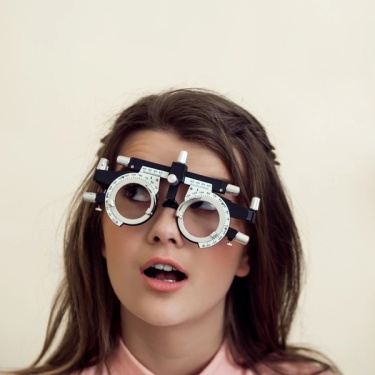Children’s Eye Health: Signs, Screen Time & Stylish Kid-Safe Frames
Spot early signs of eye issues in kids. Learn screen time tips and explore stylish, durable eyewear options designed to keep children’s vision safe.


Vision health is one of the most important aspects of a child's growth and cognitive development. In their early learning stages, children rely heavily on their sense of sight to understand the world around them, interact with the environment, and absorb information in the classroom. Therefore, detecting vision problems early is a crucial step in protecting their educational and social abilities and preventing a loss of self-confidence.
What Are the Early Signs of Eye Problems in Children?
Signs of poor vision in children vary, and parents may not easily notice them because the child cannot always clearly articulate what’s wrong. The most prominent signs include holding objects close to the face while reading or watching television, frequent eye rubbing or squinting, redness or tearing for no apparent reason, complaints of recurring headaches, avoiding activities that require visual precision, such as coloring or puzzle assembling, excessive sensitivity to light, and frequent tripping or bumping into objects while walking. Experts recommend starting eye exams for children as early as 6 months, then at the age of 3, and before they start school, even if they don't exhibit any obvious symptoms.
Limit Their Screen Time
Screen exposure has become a daily part of a child's life, which requires regulating screen time to limit its negative impact on vision. One of the most important recommendations is to determine screen time based on age. Children under two years of age should avoid screens completely, while children between two and five should limit screen time to no more than one hour per day.
Moderate screen time is recommended for children six years and older, with regular breaks. It is also important to encourage children to engage in natural visual activities such as drawing, playing outdoors, and reading books. Manage screen time side effects by following some tips to reduce the harm to children's eyes. You can start by adjusting the screen brightness to a comfortable, yet not-overly bright level. Also, keep the device at least 40 cm away from their eyes. For a comfortable night's sleep, it's best to avoid using electronic devices for at least two hours before bedtime to reduce visual strain and promote quality sleep.
Which Glasses Are Good for Kids?
When choosing eyewear for children, several factors must be considered to ensure comfort and safety. It's preferable to choose lightweight, break-resistant lenses to suit their age and active lifestyles. It's also helpful if they're scratch-resistant and offer UV protection; blue light protection is also essential for computer or TV use. The frames themselves should be comfortable and lightweight, and their colors and styles should be fun and appealing to kids, encouraging them to wear them proudly. Finally, it's advisable to avoid metal and similar glasses and opt for safe materials such as rubber or high-quality acetate.
Healthy eyesight is a cornerstone of healthy child development, and knowing the early signs of vision problems enables parents to intervene in a timely manner. Additionally, choosing the right eyewear makes your child more comfortable, confident, and able to interact with their world clearly.
You can visit your nearest Doctor M store or our website, and explore our wide and diverse selection of kids' eyeglasses and various lens options that provide optimal eye protection for your little ones. You can also consult our expert team of optometrists about your child's eye health and testing.
Start Enjoying Doctor M Benefits

100% Authentic Products

Secure Payment

Extended Warranty







